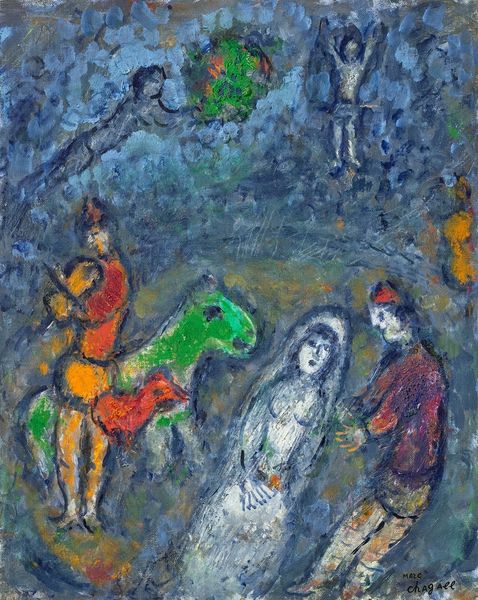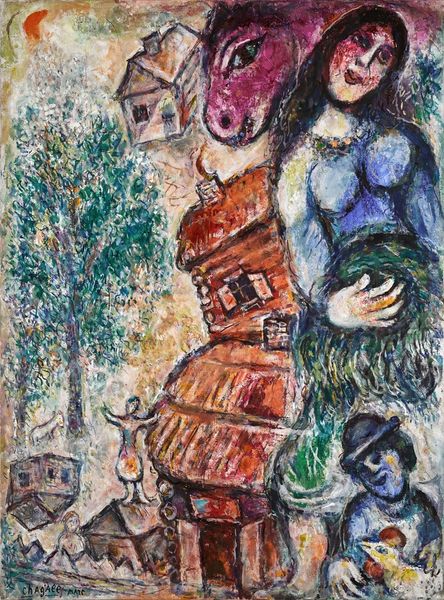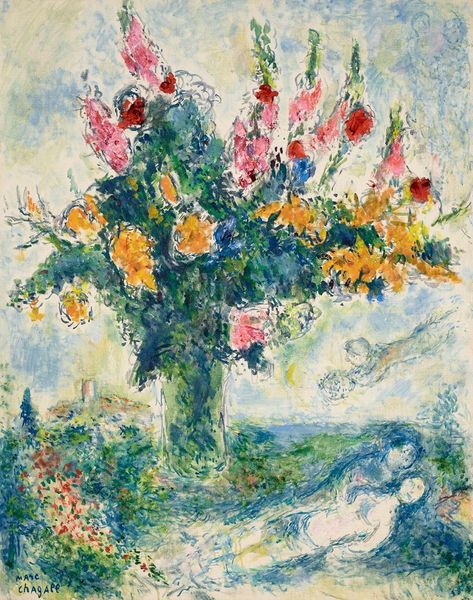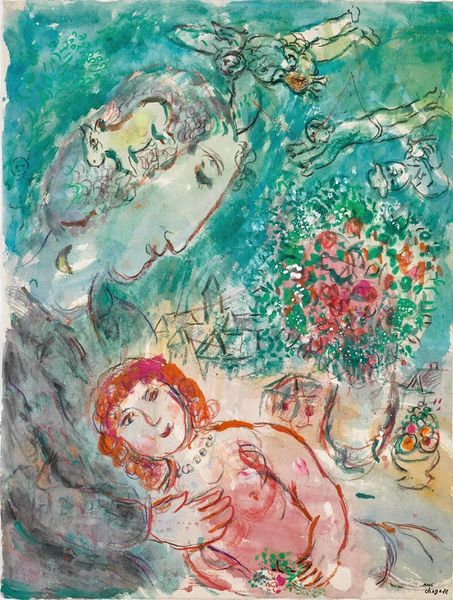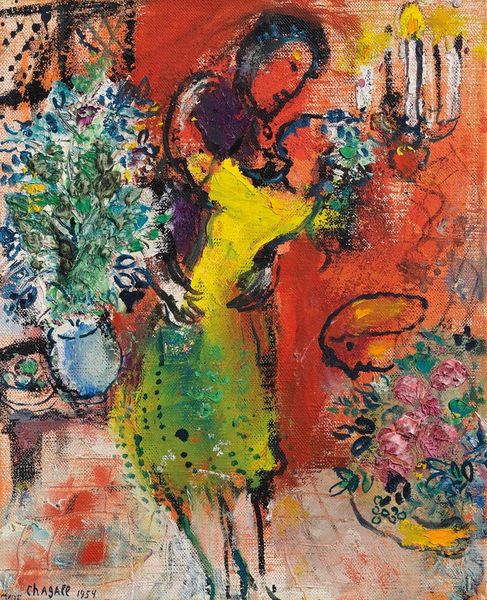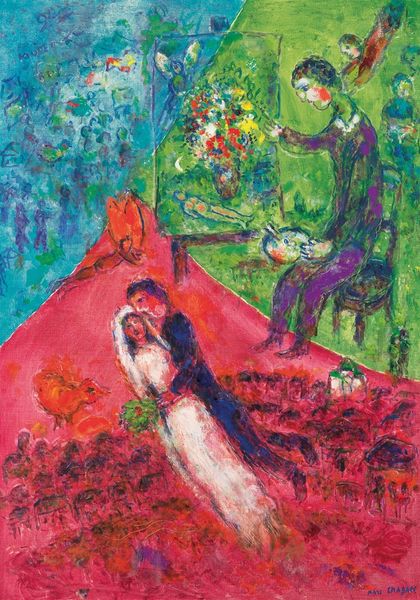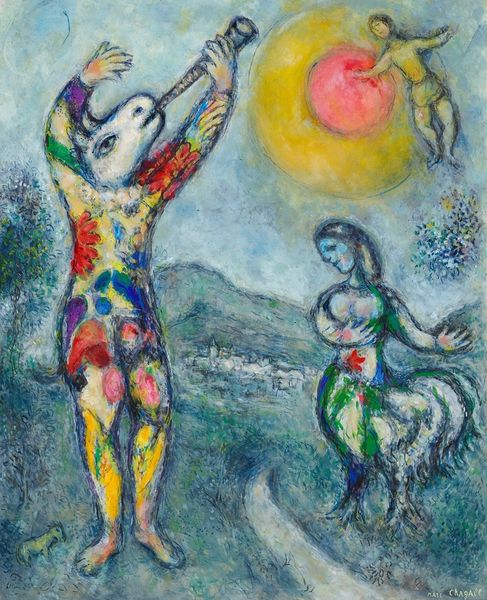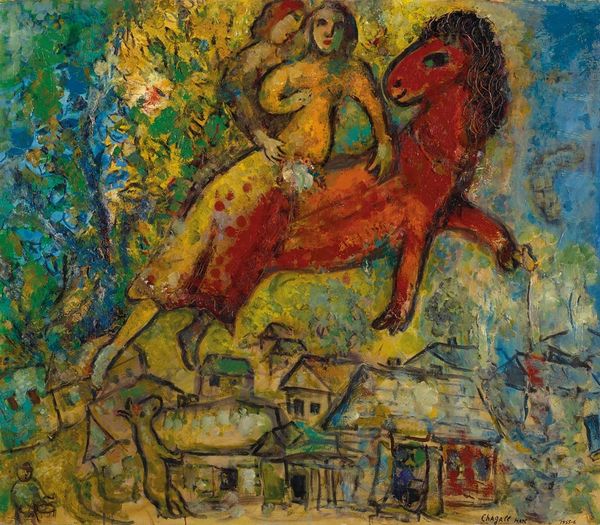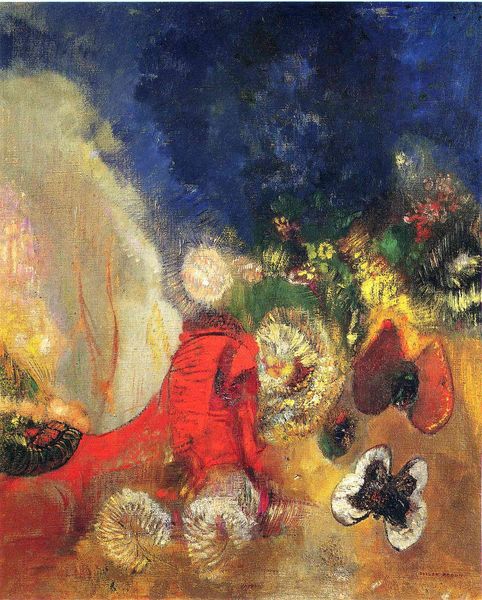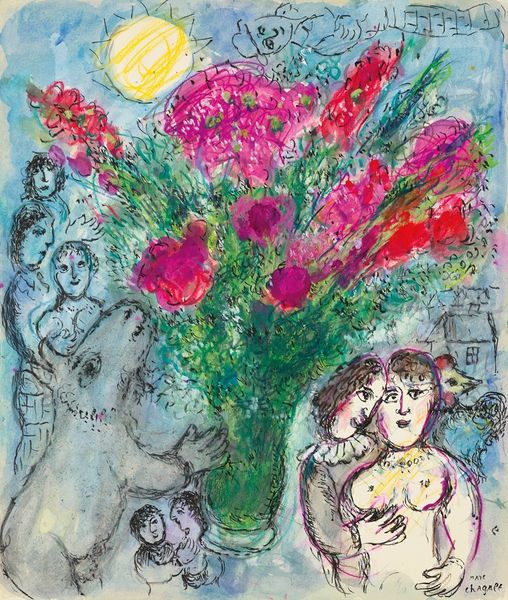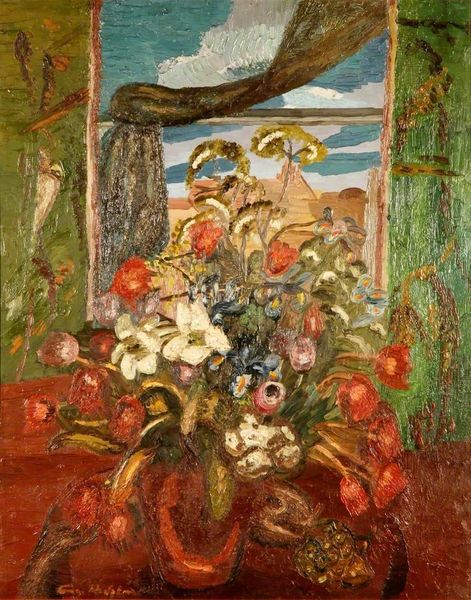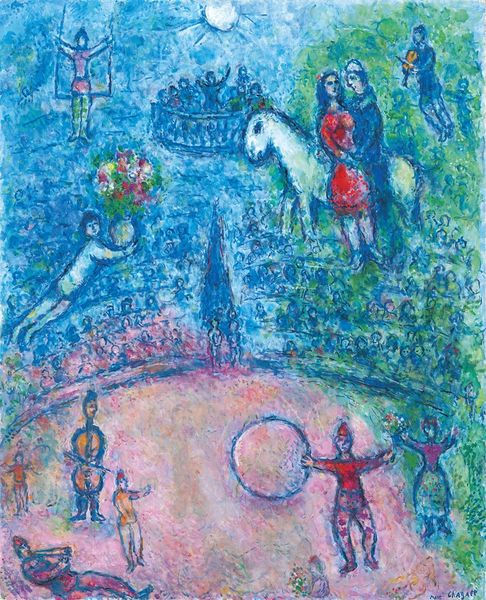
Copyright: Modern Artists: Artvee
Curator: Ah, here we are standing before Marc Chagall’s L’Été, or “Summer,” created in 1977, a vibrant oil painting pulsating with life. Editor: Oh my goodness, it's a dreamy, chaotic explosion of color! It's like a memory bubbling up—sweet, a little overwhelming, and definitely not something you could find on Google Maps. Curator: Chagall often blurred the lines between reality and the dreamscape, and here we see a visual manifestation of that approach, the cultural and psychological archetypes expressed freely, in a symbolic way. Editor: I see that now. It’s more than just pretty colors slapped on a canvas. It's like looking into a soul—albeit a very exuberant and slightly bonkers soul. There’s a mother and child, some kind of goat-like creature… and is that a ghostly figure floating in the background? What’s the symbolic meaning behind it all? Curator: Motherhood, family, perhaps nostalgia for his Russian homeland. Animals often represent innocence or pastoral life in Chagall's work. The floating figure could represent a guardian spirit, or even the artist himself, ever-present, observing the scene. Editor: A floating Chagall, of course! He’s cheeky like that. This color palette— the reds, yellows, and blues—they’re so joyful and intense. Is it fair to call him the Matisse of the shtetl? I get the same unburdened playfulness of color that lifts you right off your feet! Curator: An interesting association. Certainly, the bold colors evoke a joyous mood, aligning with the essence of summer but there are other elements present like the tree as symbol of family ties which connect earth to sky that tie him more directly into Jewish symbolism. Chagall consistently revisited themes of cultural memory, particularly linked to his Jewish heritage. Editor: I see your point, the visual vocabulary extends far beyond pretty abstraction. He's layering memories, dreams, and folklore into one big summery stew, then serving it to us on a canvas! Curator: And that’s why Chagall continues to resonate, doesn’t it? Editor: Absolutely, his is a language that speaks directly to the heart, transcending any particular dogma, even if it comes through goats, and floating figures and abstract expressionism. You come away with the feeling of being a child again, open and willing to embrace anything.
Comments
No comments
Be the first to comment and join the conversation on the ultimate creative platform.
